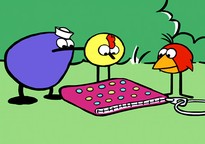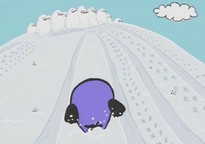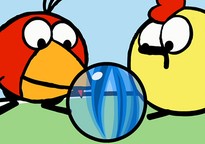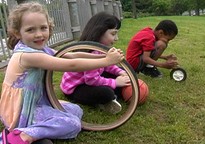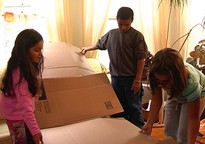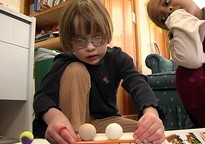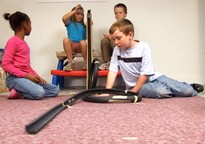Below is a list of all the materials you’ll need for the activities and learning centers. For the specific materials you’ll need for each activity and learning center, see the individual entries in the curriculum.
flat ramps (introduced in Week 1): flat pieces of cardboard, foam core, and/or wood
tube ramps (introduced primarily in Week 2): cardboard tubes of different lengths—paper towel, toilet paper, wrapping paper, mailing tubes; cut some of the tubes horizontally to form open troughs
flexible tube ramps (introduced in Week 3)—foam pipe insulation is ideal (1-inch diameter works well for large marbles), which can be found in hardware stores; these can be cut in half to make open troughs
wide, flexible hoses from shop vacs or sump pumps (look for these in the plumbing section of hardware stores)
PVC pipe, pieces of gutter, wooden trim (the ones with a trough in the middle keep balls nicely in the track!)
boxes, building blocks, and other objects for supporting the ramps
a variety of balls of different sizes and weights—beach ball, kickball, tennis ball, ping pong ball, Wiffle ball, golf ball, football, etc.
wheeled objects (small toy cars, wagons, etc.)
marbles, large size (25 mm), not the smaller (16 mm) size
a collection of nonspherical objects that roll or slide down ramps. For example, a roll of tape, eraser, marker, stuffed animal, blocks, toy cars, toilet paper roll, etc.
objects to serve as obstacles for balls rolling down ramps: cardboard tubes, toy cars, blocks, pencils, empty spice containers, plastic cups, plastic bottles, etc.)
camera and/or video camera
collage and 3-D materials: craft sticks, yarn, circle-shaped stickers
masking tape
paste, tape, and/or glue
scissors
pencils, crayons, markers, and chalk
white printer paper and colored construction paper
chart paper
clipboard
Safety Issue: Marbles
Because marbles can be a choking hazard to children, it is important to closely monitor children when they play with them. Use only large size (25 mm) marbles. Make sure children understand not to put marbles in their mouth. If your family child care has infants and toddlers, provide them with alternative ramp activities that use larger sized balls.

 Español
Español




